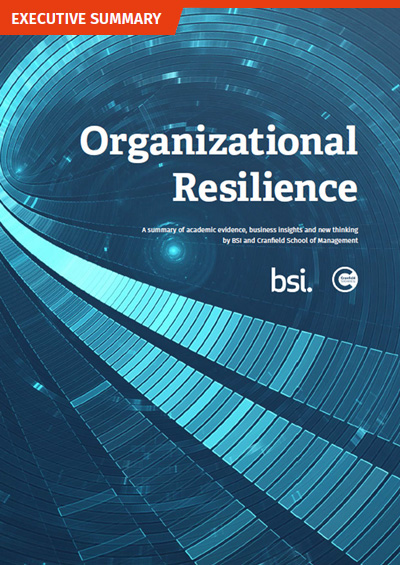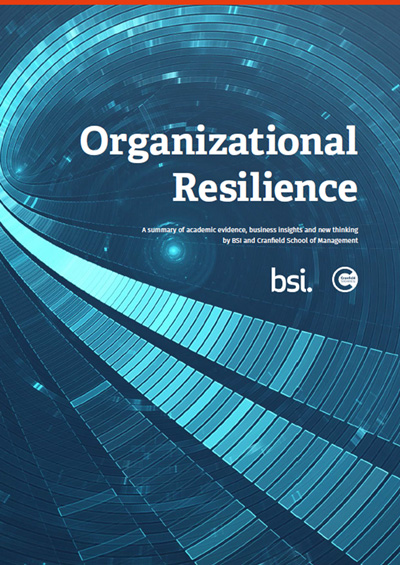A new global study by BSI (British Standards Institution) and Cranfield School of Management, finds that business leaders are struggling to balance risk with opportunity, threatening the long-term survival of their firms. The report, “Organizational Resilience: A summary of academic evidence, business insights and new thinking”, assesses half a century’s accepted wisdom on best-practice management, identifying an acute need for firms to embrace risk if they are to survive and thrive.
Key Facts
-
According to the study conflicting management advice has left senior executives reluctant to intervene, with the subsequent organizational paralysis leading firms to potentially sleepwalk into disaster. The report consolidates half a century of management thinking and over 180 academic papers into a single coherent approach. BSI commissioned the report in the wake of finding that less than one third of CEOs are confident in leading their firms to long term success.
-
The study by Professor Denyer highlights the benefits of pairing agile thinking with robust systems. Successful firms do not look to achieve “zero risk”, but rather experience “zero trauma” from business setbacks, adapting to ensure future success.
-
Organizational Resilience has risen in prominence since it was first documented in guidance from BSI in 2014. Today’s study sets out a clear framework for adopting good practice across a business. Effective leadership is essential for implementation according to the report, with executives urged to manage the tension between defence and progression, consistency and flexibility.
-
David Denyer, Professor of Leadership and Organisational Change at Cranfield and author of the study comments: “Great businesses are built by leaders prepared to take the bad with the good. They recognize the tension between consistent defensive behaviours that stop bad things happening, and progressive, flexible ideas that allow the good to prosper. Put simply, senior leaders must manage the tensions between control, action, performance and innovation if organizations are to be truly resilient – and this requires paradoxical thinking.”
-
Howard Kerr went onto say: “A resilient organization is one that doesn’t merely survive over the long term, but flourishes. We believe that mastering Organizational Resilience offers the best opportunity for companies to pass the test of time, unlocking future prosperity and longevity. Those that learn to spring forward and not stagger backwards, reap dividends for their company, employees, investors, government and society in general.”
Impact of our research
The report describes how thinking on Organizational Resilience has evolved over time, and identifies two core drivers for achieving it: Defensive – stopping bad things happening, Progressive – making good things happen and two core approaches – consistency and flexibility.
Three new concepts are described in the report The Five Phases of Organizational Resilience, The Tension Quadrant, and the 4Sight Model. The concepts and models help organisations to develop a ‘fit for purpose’ approach to Organizational Resilience. Paradoxical thinking helps organisations shift from either/or solutions to both/and responses.
Why the research was commissioned
Identifying promising practice in Organizational Resilience is a significant challenge, not least because of the conflicting guidance found across a variety of information sources. To address this issue, BSI teamed up with Cranfield School of Management to assemble the best available research on Organizational Resilience and to explore how it has evolved as a principle, and to better understand the best practice of world-leading firms. BSI commissioned Cranfield School of Management to assess almost half a century’s management thinking, from 1970 to the present day, on how organizations can become resilient. Over 600 academic papers were initially screened, of which 181 were considered worthy of deeper analysis, together with a wealth of additional books and reports. The evidence assessment was supplemented with case studies of organizations that had been identified as exhibiting best practice in Organizational Resilience.



